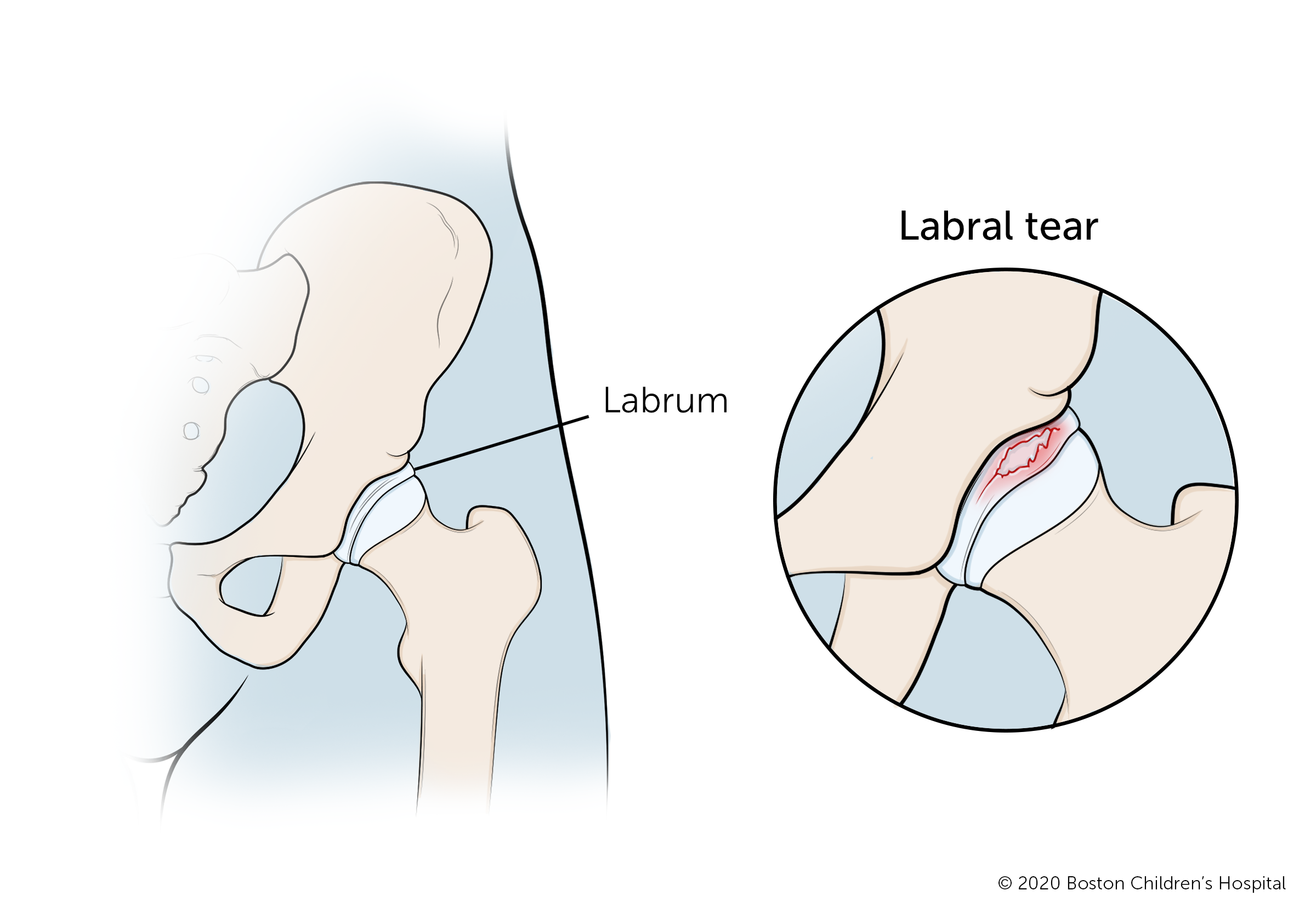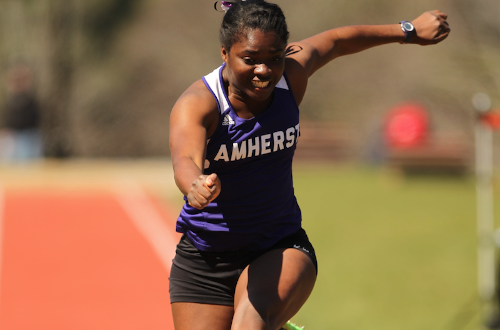Hip Labral Tear | Symptoms & Causes
What are the symptoms of hip labral tear?
Hip labral tear symptoms may include:
- a sharp pain in the front of the hip, sometimes shooting down the thigh — typically a symptom of an anterior labral tear
- pain in the back of the thigh or buttock — typically a symptom of a posterior labral tear
- hip stiffness or limited range of motion
- a clicking sound in the hip when you move your leg
- hip pain when you rotate your leg
What causes a hip labral tear?
A hip labral tear is a wear-and-tear injury. Athletes whose sports and activities involve repetitive rotating and twisting leg motions are particularly prone to this injury. Such sports include golf, soccer, ice hockey, ballet, gymnastics, and football.
Labral tears can also be caused by structural problems of the hip, including hip dysplasia and hip impingement. In both conditions the hip bone does not fit well in the hip socket, and can damage the labrum over time. In a small number of cases, labral tears can be caused by a trauma, like a car accident, fall, or a serious collision in sports.
Hip Labral Tear | Diagnosis & Treatments
How is a hip labral tear diagnosed?
Your doctor will start by asking about your symptoms and what triggers them. They may ask if you or any of your close family members (parents, siblings) have had problems with your hip such as hip dysplasia or impingement.
Physical exam and Faber test
During a physical exam, your doctor will look for signs of a hip labral tear or other hip disorder. They may move your leg around to test the range of motion in your hip joint, as well its stability.
Your doctor may also do FABER (flexion, abduction, external rotation) and FADIR (flexion, adduction, internal rotation) tests. You will lay on your back on an exam table and bend the knee of your affected leg so that it is at a right angle to your other leg. The doctor will then press gently on your bent knee back and forth and ask if this causes pain.

What you should know about hip labral tears in young athletes
Dr. Young-Jo Kim, director of the Child and Young Adult Hip Preservation Program, discusses the causes of hip labral tears and his treatment philosophy.
Imaging tests
- An x-ray can help your doctor see signs of a structural issue, such as hip dysplasia, that may have led to the labral tear in the first place. However, because the labrum is soft tissue, signs of a hip labral tear will not show on an x-ray image.
- A non-contrast 3T MRI (magnetic resonance imaging) or a dGEMRIC (delayed gadolinium-enhanced MRI of the cartilage) scan can provide valuable information about the health of the cartilage tissue and status of the labrum. Neither require an uncomfortable injection of contrast dye into the hip joint.
- Sports ultrasound uses sound waves to create images of muscles, ligaments, and joints in motion. Your doctor will ask you to move your leg as they watch for signs of damaged tissues around your hip socket on the ultrasound machine.
- CT scan (computed tomography) provides detailed images of the bones of the hip socket. Hip specialists at Boston Children’s use CT data and make 3-D bone images to understand how the bone structure may have caused the labral tear.
How is a hip labral tear treated?
Hip labral tears occur on a spectrum, from mild to severe. If you have a mild hip tear, your doctor may recommend non-surgical treatment. However, a severe tear or one caused by a structural hip issue will likely require surgery.
Non-surgical treatment for acetabular labral tears
Some labral tears are treated with pain medication and physical therapy. Sometimes a hip injection may be needed. The doctor injects the hip with numbing medication and may use a steroid to reduce the pain and inflammation in the hip joint.
Non-surgical treatments for hip labral tears include:
- rest
- activity restrictions
- anti-inflammatory and pain medications
- exercises and physical therapy to strengthen the muscles around the hip joint
Surgical treatment for acetabular labral tears
If the labrum does not heal on its own, you may need arthroscopic surgery to repair the torn tissue. During this minimally invasive surgery, the surgeon makes two or three keyhole incisions and inserts a thin scope to see the joint. Then, the doctor repairs or removes damaged tissue.
If you have hip dysplasia and a labral tear, you may need open hip surgery to correct the underlying problem. With hip dysplasia, the hip socket is too shallow and the labrum is not well supported. If your doctor only fixed the labral tear without treating the dysplasia, your labrum would probably tear again. A surgery called periacetabular osteotomy (PAO) corrects hip dysplasia by changing the angle of the hip socket. This allows the hip bone to move more freely inside the socket and reduces friction between the bones that stress the labrum. The surgeon may repair the torn labrum at the same time.
How long does it take to recover from arthroscopic surgery?
You will need to use crutches for the first two to three weeks after arthroscopic surgery. You will also need physical therapy to help restore muscle strength and range of motion after the surgery. Most patients can return to sports four to six months after surgery.
How long does it take to recover from PAO surgery?
Recovery from PAO surgery is different for each patient. You will regain strength in your hip gradually, and should be able to start outpatient physical therapy around one month after the PAO. Most patients use crutches for two months post-surgery. After the hip has healed, most patients are able to return to their highest previous level of activity.
What is the long-term outlook for patients with hip labral tears?
Your long-term outlook depends on the severity of your labrum tear. For many patients, minimally-invasive hip arthroscopy successfully relieves symptoms and improves hip function. If you have hip dysplasia or another underlying hip condition, your doctor will talk with you about the long-term results of surgery and any additional treatments you may need in the future.
How we care for hip labral tear at Boston Children’s Hospital
The Child and Young Adult Hip Preservation Program at Boston Children’s Hospital has a long tradition of excellence in treating children and adults with hip labral tears and other hip disorders. We approach each patient’s condition and injury as unique and base our clinical decisions on each patient’s situation. Whenever possible, we take a non-surgical approach to our patients’ hip conditions. When a patient does need surgery for a serious hip labral tear, our surgeons are recognized across the globe for excellence in hip arthroscopy and other surgical repairs.
As the first program in the country to focus specifically on hip disorders in children and young adults, we are experts in diagnosing and treating hip pain so our patients can return to the activities they enjoy.



